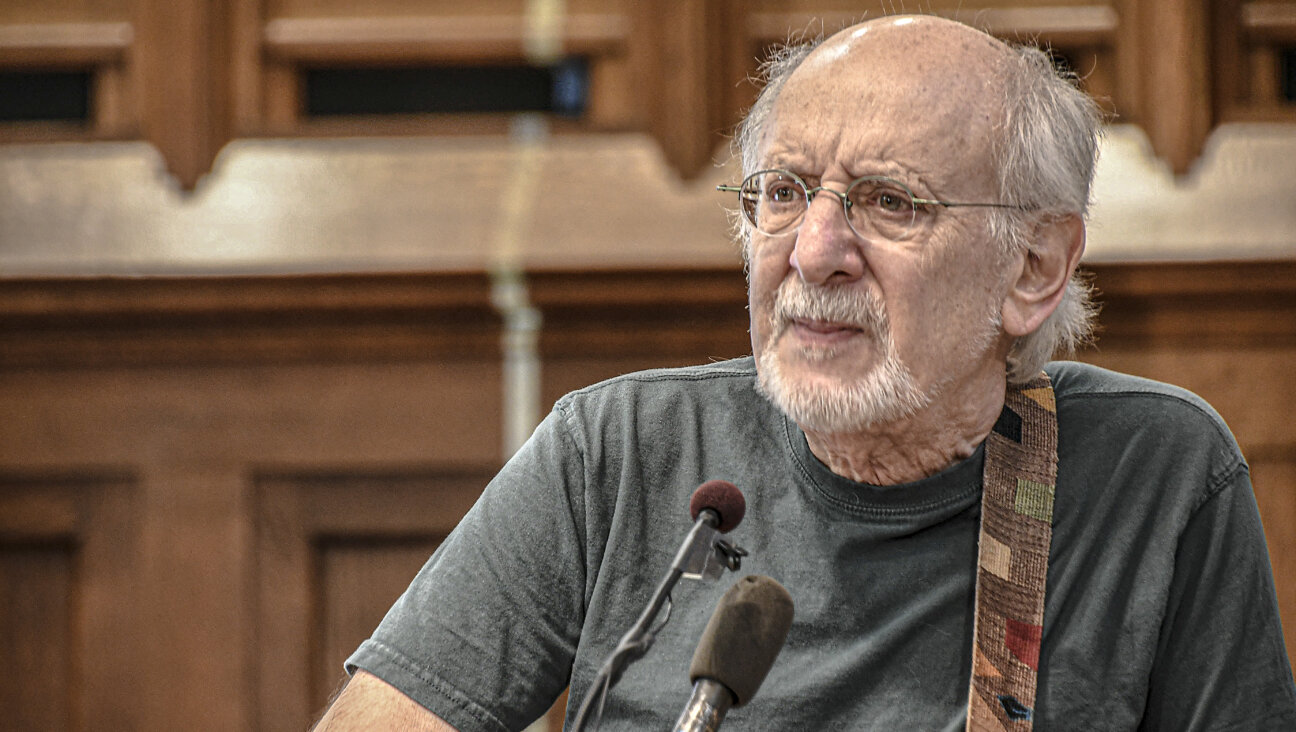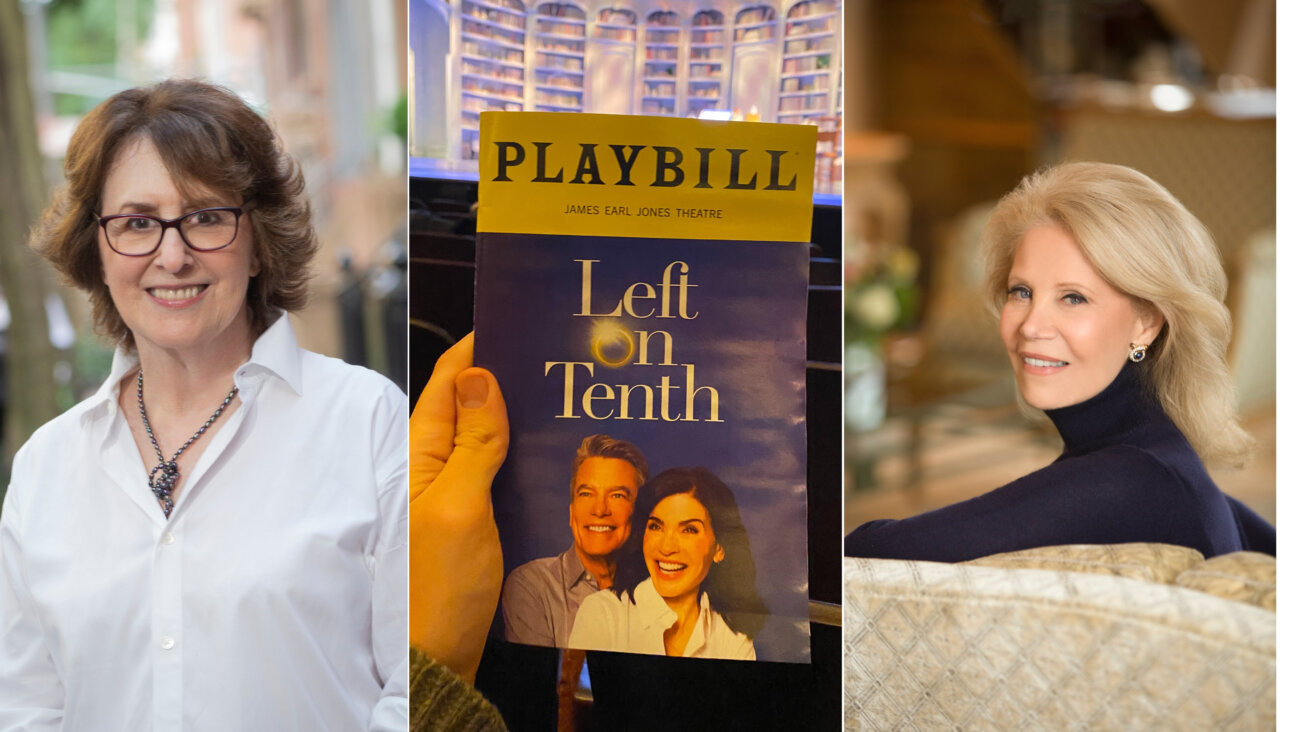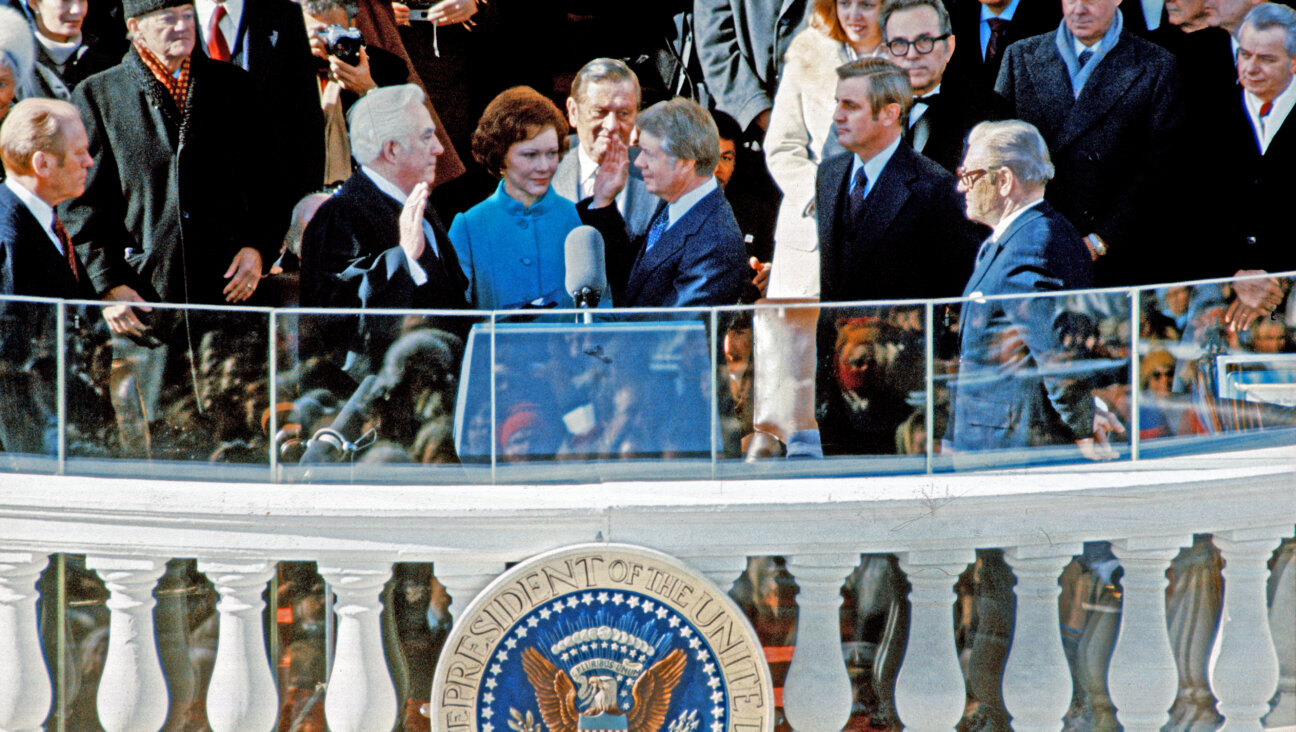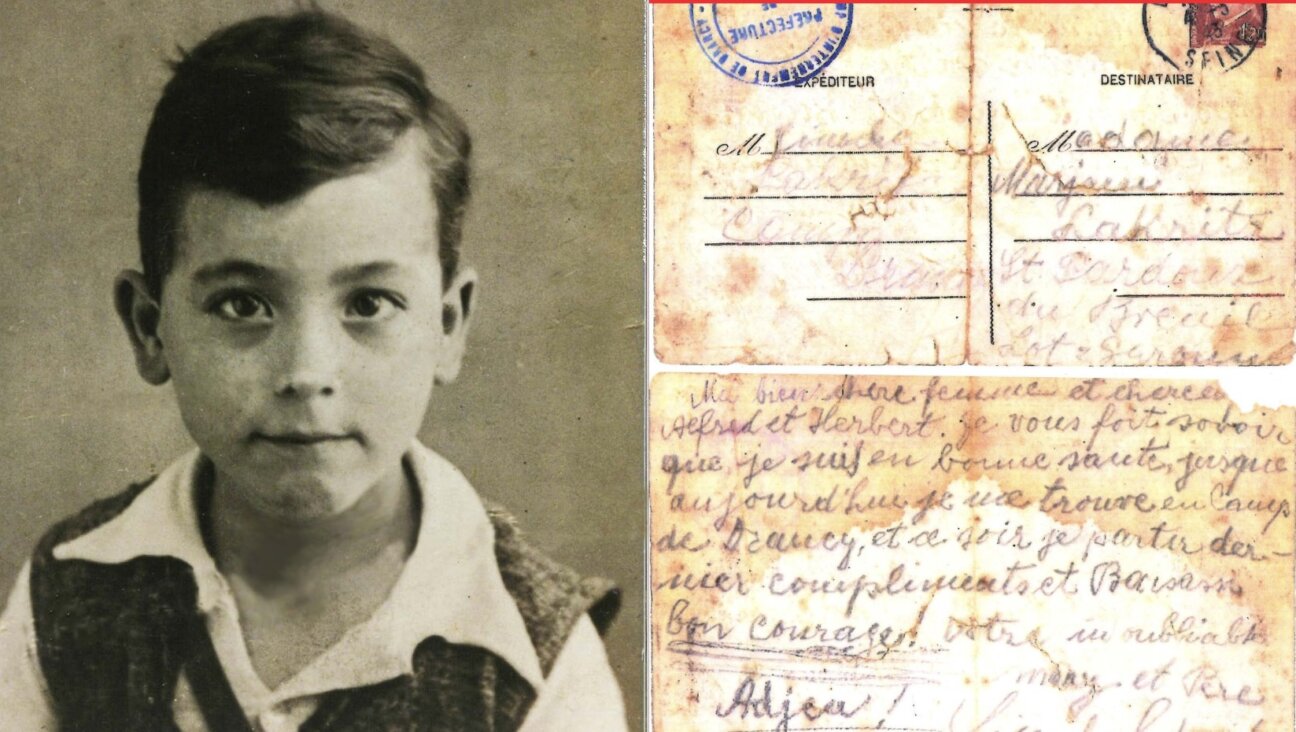‘Women of the Book’: A Photo Essay
The nature of Jewish women’s creativity in artists’ books is brilliantly explored in a traveling exhibition, Women of the Book: Jewish Artists, Jewish Themes, curated by Judith A. Hoffberg. This contemporary art form, conceptually based on illuminated manuscripts, includes 73 artists’ books — all handmade or limited editions — that explore personal narratives, Jewish identity, Jewish women’s issues and the Holocaust. The exhibit is in New Jersey at Rutgers University from March 28 to May 28. It can be previewed at www.colophon.com.
Ita Aber, renowned fiber artist, integrates the Greek letter gamma (found on ancient Jewish women’s clothing) with her daughter’s poetic meditation on women’s power in the Torah in the 12-page “Gamma Book.” Mindy Aber Barad’s haunting text speaks in the voice of the daughters of Zelophehad first exclaiming, “How come they get and we don’t?” and finally demanding from Moses, “Who will remember Zelophehad when we’re gone?”
“Prayer for Agunot” by Viviana Lombrozo transforms the book into a cry of protest for justice. A tattered ketubah supports the Prayer for Agunot that beseeches: “Creator of Heaven and Earth… free the captive wives of Israel, when love and sanctity have fled the home….” The prayer is faced by images of women behind five bars wrapped with faux tefillin straps and boxes. Male religiosity misusing the Torah imprisons these women.
Rose-Lynn Fisher’s “Inside” is an accordion book of rare handmade paper that frames X-ray images of pomegranates lovingly sewn on each page. The metaphor of the fruit’s fecundity expands to reveal a mysterious birth process and unfolds a uniquely female view of the potential creativity of the entire Jewish people.
“Shot on the Spot” by Terry Braunstein is a brutal memorial that takes an antique book, cuts a window into the interior of six leaves, and lists the names and ages of an entire village that was rounded up and murdered by
the Nazis. Evocative period photographs of the villagers, an actual rifle shell and cutouts of overly dramatic Renaissance figures turn the memory of this pogrom into an accusation against Western culture.
A message from our Publisher & CEO Rachel Fishman Feddersen

I hope you appreciated this article. Before you go, I’d like to ask you to please support the Forward’s award-winning, nonprofit journalism so that we can be prepared for whatever news 2025 brings.
At a time when other newsrooms are closing or cutting back, the Forward has removed its paywall and invested additional resources to report on the ground from Israel and around the U.S. on the impact of the war, rising antisemitism and polarized discourse.
Readers like you make it all possible. Support our work by becoming a Forward Member and connect with our journalism and your community.
— Rachel Fishman Feddersen, Publisher and CEO




















